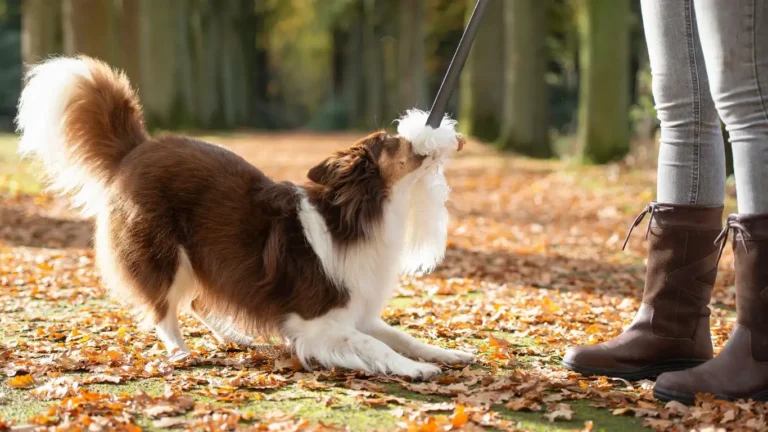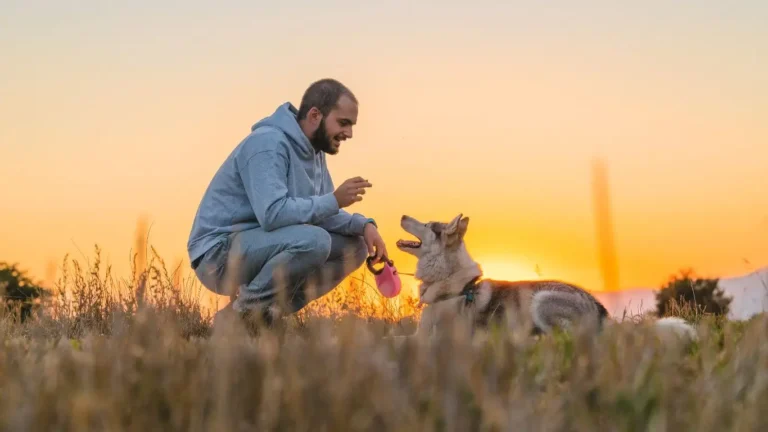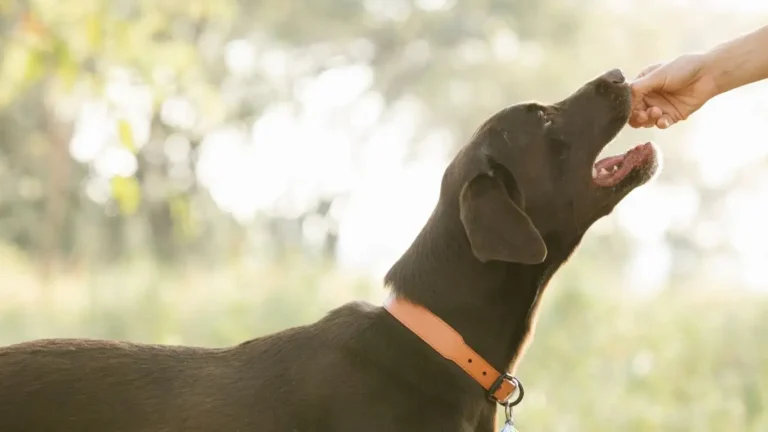Ultimate Guide to How to Train a Dog to Be Quiet in the Backyard
Training a dog to be quiet in the backyard can sometimes feel like a never-ending challenge, especially when you have a dog who loves to bark at every passing leaf or bird. As a Canine-Assisted Therapy Trainer, I’ve worked with many dog owners who face this same issue, and I can tell you firsthand that it’s totally manageable with the right approach. Whether you’re dealing with an overly excited pup or a dog that barks out of sheer habit, there are specific techniques you can use to help them learn to be calm and quiet. This guide will walk you through the steps you need to take, including creating a quiet environment, using positive reinforcement, and understanding the root causes of barking. Let’s get started on the journey to a quieter backyard experience for both you and your dog.
Understanding Why Dogs Bark in the Backyard
Before we dive into training, it’s important to first understand *why* your dog is barking. Dogs have a variety of reasons for making noise, and identifying the cause is key to addressing the behavior effectively. You see, barking isn’t always just about being loud for the sake of it—it’s often a communication tool for them. Understanding these triggers will help you figure out how to train a dog to be quiet in the backyard. Here are some common reasons dogs bark:
- Alerting to danger: Some dogs bark to alert their owners to what they perceive as a threat, even if it’s just a squirrel or a neighbor walking by.
- Excitement or boredom: Dogs who are left in the backyard alone may bark out of excitement, frustration, or boredom. If there’s nothing to do, they may simply entertain themselves by barking.
- Seeking attention: Dogs often bark to get their owner’s attention, whether it’s for playtime or just to be noticed.
- Territorial behavior: If your dog sees the backyard as their territory, they may bark to assert dominance or warn other animals away.
Once you know what’s motivating the barking, you can address it more effectively. Whether it’s a need for attention or an instinct to guard their space, understanding the root cause is the first step in changing the behavior.
Creating the Right Environment for Training
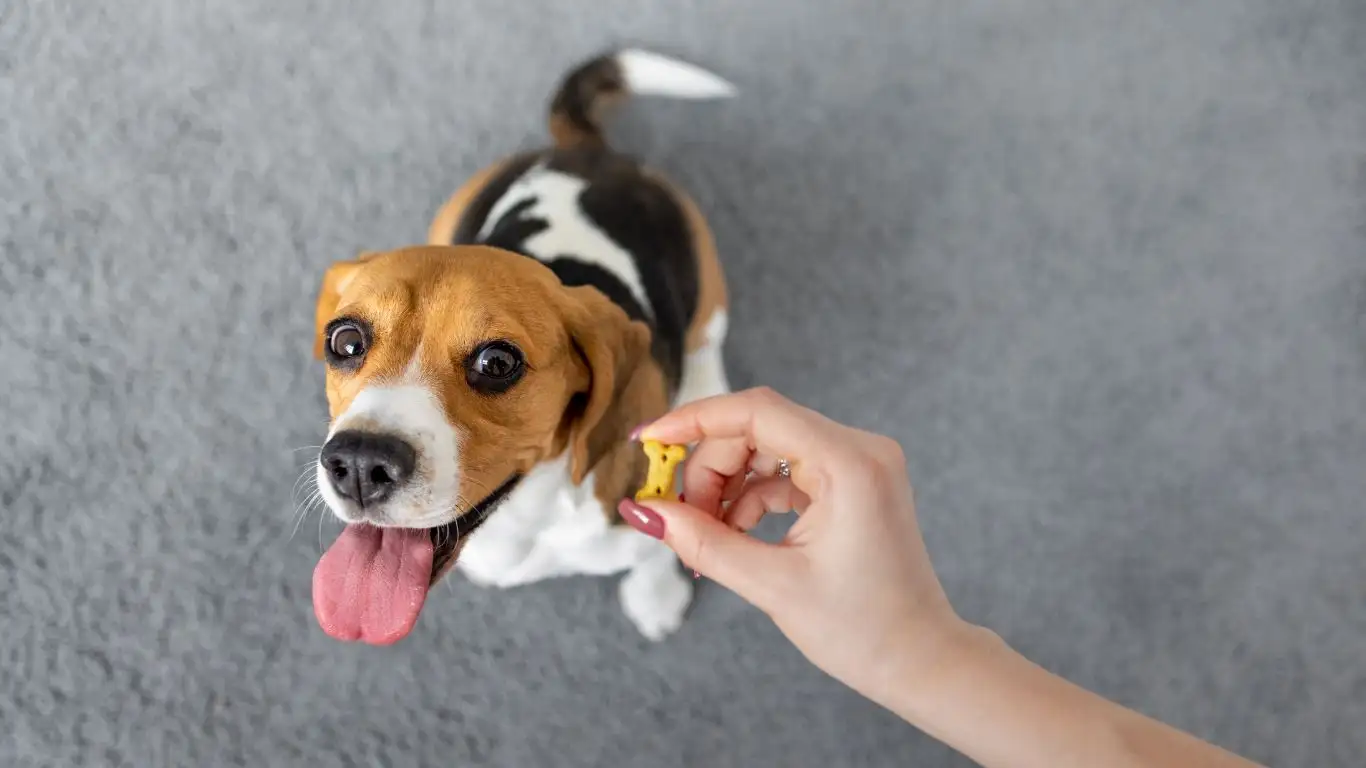
When it comes to training a dog to be quiet, the environment plays a huge role. You can’t expect your dog to learn how to be calm in the backyard if there are constant distractions. Creating the right setting for training is essential for success. Here are some tips to make your backyard a more peaceful place for your dog:
- Minimize distractions: If possible, try to reduce the number of things that could trigger your dog’s barking. This might mean temporarily moving toys or objects that are in the yard or using fencing to block views of areas that seem to trigger barking.
- Provide a quiet space: Set up a designated area in the backyard where your dog can retreat for quiet time. This can be a shaded corner, a cozy dog house, or a crate that feels like a safe haven for them.
- Ensure comfort: Make sure your dog is comfortable while training. If it’s too hot, too cold, or uncomfortable for your dog, they’ll be less likely to focus and listen to you. A comfortable dog is a more focused dog.
It’s crucial that your dog feels safe and at ease in their training space. By removing distractions and offering a secure, calm environment, you set the stage for a successful training session.
Consistency is Key: Stick to a Routine
As a trainer, I can’t stress enough how important it is to maintain a routine. Dogs thrive on structure and predictability, so consistency is absolutely critical when teaching them to be quiet. If you only work on this behavior sporadically, your dog might become confused and frustrated. By sticking to a regular schedule and consistently reinforcing good behavior, your dog will begin to understand what’s expected of them.
- Set specific training times: Aim for at least 10-15 minute training sessions in the backyard each day. Short and sweet is better than long and overwhelming.
- Use the same commands every time: Whether you’re telling your dog to “quiet” or “enough,” be consistent with the words and tone you use.
- Reward good behavior immediately: Positive reinforcement works wonders. As soon as your dog is quiet, reward them with treats or praise so they associate silence with something positive.
When you consistently reinforce the same rules and reward your dog for being quiet, they will start to make the connection between silence and rewards. Over time, they will learn that staying quiet is a behavior that gets them what they want.
Using Positive Reinforcement to Train a Dog to Be Quiet
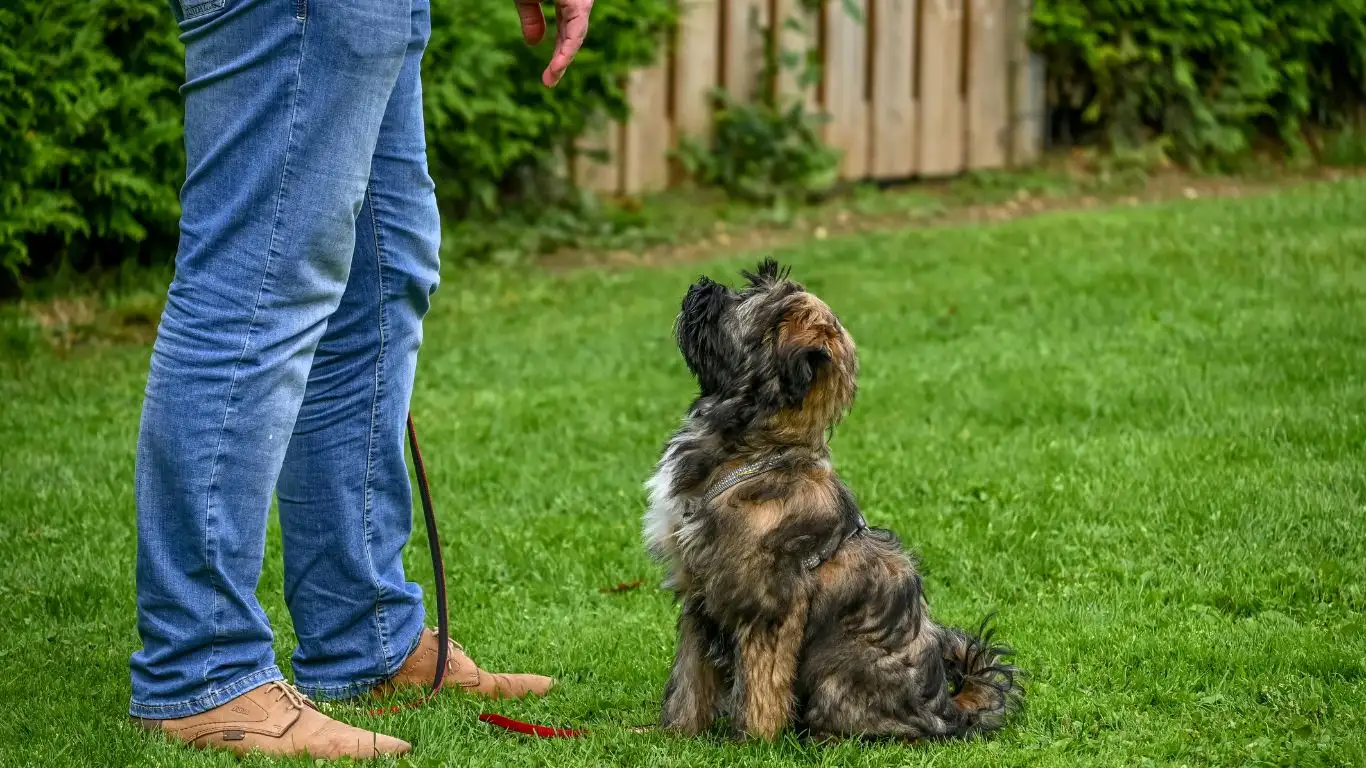
Positive reinforcement is one of the most powerful tools in a trainer’s toolbox, and it’s particularly effective when teaching a dog to be quiet. I always tell dog owners that rewarding their dog for the right behavior is the best way to get results. Here’s how to use positive reinforcement to train your dog to stay quiet:
- Reward for silence: As soon as your dog stops barking, immediately reward them with a treat, toy, or praise. This shows your dog that being quiet is the behavior you want to reinforce.
- Gradually increase expectations: Once your dog begins to understand that being quiet earns rewards, start asking for longer periods of silence before offering the reward. For example, wait 5 seconds, then 10 seconds, and so on.
- Use high-value rewards: During training, offer treats that are especially exciting to your dog, such as their favorite snack or a toy they love. This increases the likelihood that they will want to repeat the desired behavior.
The beauty of positive reinforcement is that it creates a bond between you and your dog based on mutual trust and understanding. Dogs respond well to being praised and rewarded, and when you create a system where being quiet leads to something positive, they will be more likely to repeat that behavior.
Managing Barking Triggers: How to Train a Dog to Be Quiet in the Backyard
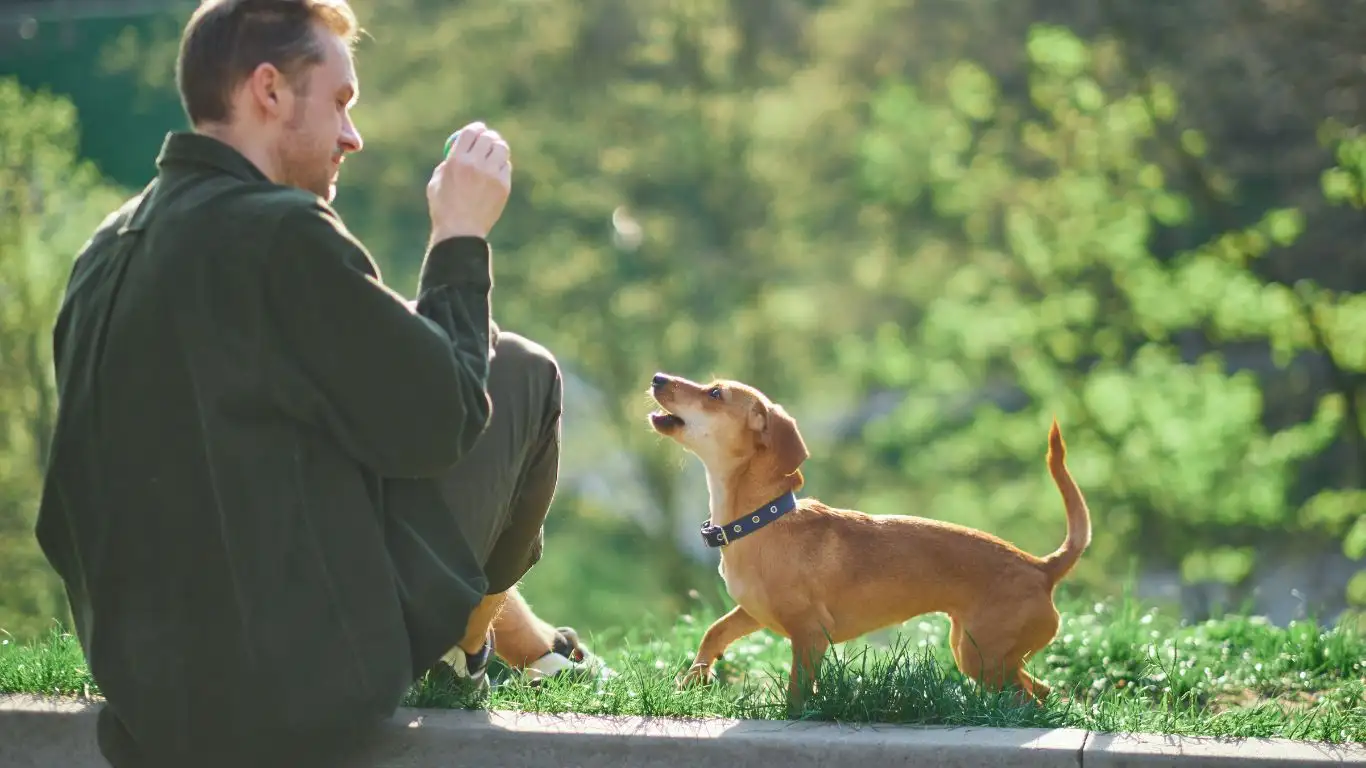
As we continue from where we left off, it’s time to dive deeper into managing those triggers that often set off barking in the backyard. If you’ve ever tried to train a dog to be quiet, you’ll know that certain things—like a delivery truck, a neighbor’s dog, or even a butterfly floating by—can cause an immediate eruption of noise. So how do we tackle these triggers? The answer lies in *desensitization* and *counter-conditioning*—two techniques that can be incredibly effective in reducing reactive barking.
Desensitizing Your Dog to Triggers
Desensitization is all about gradually exposing your dog to the stimulus that triggers the barking, but in a way that doesn’t overwhelm them. It’s a process of helping your dog become less sensitive to things like sounds or sights that usually make them bark. For example, if your dog tends to bark every time a neighbor’s dog is outside, you can start by introducing them to the sight of the dog in a controlled and calm environment.
- Step 1: Start by exposing your dog to the trigger (e.g., the neighbor’s dog) from a distance. The goal is to keep the experience calm and non-threatening.
- Step 2: As your dog sees the trigger without reacting, reward them with treats or praise. This helps them associate the presence of the trigger with something positive.
- Step 3: Gradually decrease the distance between your dog and the trigger, all the while rewarding calm behavior.
Remember, the key is to go at your dog’s pace. If you rush the process, it could lead to frustration, which only adds to the problem. Over time, your dog will learn that there’s no need to bark at the neighbor’s dog because nothing negative happens when they remain quiet.
Using Counter-Conditioning to Change the Response
Counter-conditioning is another powerful technique. It works by changing your dog’s emotional response to a specific trigger. Instead of barking in response to something that’s exciting or frustrating, your dog will learn to stay calm. Let’s say your dog barks at passing cars. You can change their association with cars by giving them treats or praise every time a car drives by without barking.
- Step 1: Identify the specific trigger that causes your dog to bark, like passing cars or people walking by.
- Step 2: The moment the trigger occurs, immediately distract your dog with a treat or favorite toy.
- Step 3: Repeat this process until your dog associates the presence of the trigger with positive experiences instead of the need to bark.
This method takes time and patience, but over the long term, it can change your dog’s response to the world around them, making them less reactive and more relaxed in the backyard.
Training Your Dog to Focus on You

One of the most effective ways to reduce barking in the backyard is to train your dog to focus on you. If your dog is constantly distracted by sounds or movement around them, they’re more likely to bark. By teaching your dog to focus on you, you can help them shift their attention away from distractions. This is a valuable skill for training any unwanted behavior, including barking.
Introducing the “Look” Command
The “look” command is a simple yet powerful tool that helps your dog focus on you instead of whatever is happening in the environment. Here’s how you can teach it:
- Step 1: Hold a treat near your face and say the word “look” in a clear, upbeat voice.
- Step 2: When your dog looks at the treat, immediately reward them with the treat and praise.
- Step 3: Gradually phase out the treat, but continue rewarding your dog with praise when they respond to the “look” command.
Once your dog understands the “look” command, you can use it in the backyard when they start to bark. If they’re focused on you, they’re less likely to get distracted by the things that normally trigger their barking. This command can be a game-changer in your training process.
Reinforcing Calm Behavior with a “Place” Command
Another great command to use in your backyard training routine is the “place” command. This teaches your dog to go to a specific spot (like a bed or mat) and stay there until released. This command is especially helpful when you’re trying to manage barking caused by overstimulation or excitement. If your dog starts barking uncontrollably, redirect them to their “place,” where they can remain calm and focused.
- Step 1: Show your dog the spot where you want them to go (e.g., a mat or bed) and use the command “place.”
- Step 2: When your dog goes to the spot, reward them with a treat and praise.
- Step 3: Gradually increase the amount of time your dog stays in the “place” spot before releasing them.
By practicing the “place” command regularly, your dog will start to understand that when they are asked to go to their spot, they need to settle down and remain quiet. This can be a great way to manage situations where they would typically start barking, such as when someone walks by or when they’re feeling overstimulated.
Dealing with Separation Anxiety in the Backyard

In some cases, barking in the backyard may be a sign of separation anxiety. If your dog is used to being around you constantly and suddenly finds themselves alone outside, they might bark due to stress and discomfort. This type of barking can be more challenging to address, but it’s not impossible. The key is to make sure your dog feels secure and gradually get them accustomed to spending time alone outside.
Steps to Address Separation Anxiety
- Step 1: Start by spending short periods of time outside with your dog. Let them get used to being outdoors with you before slowly increasing the time they spend alone.
- Step 2: Provide distractions such as chew toys or a favorite bone to keep your dog engaged while you’re away.
- Step 3: Gradually increase the time your dog spends alone in the backyard, always rewarding calm behavior and remaining patient during the process.
Addressing separation anxiety requires time and consistency. It’s important to never punish your dog for barking during these sessions. Instead, focus on reinforcing calm behavior and offering plenty of positive reinforcement. In time, your dog will feel more secure and relaxed in the backyard, reducing the need for barking.
Reinforcing Quiet Behavior Over Time

So far, we’ve covered a lot about managing barking triggers, teaching focus, and helping your dog understand when to be quiet. But there’s one more important aspect to successful dog training—reinforcement. It’s essential to understand that training doesn’t end once your dog becomes quiet for a few minutes. In fact, ongoing reinforcement is key to maintaining that calm behavior in the long term. Here’s where patience and consistency continue to play a major role in the process.
Why Consistency Is Crucial in the Long Run
It’s easy to get excited when your dog starts being quiet in the backyard after only a few days or weeks of training. But just like with any other behavior, your dog will need reminders to maintain their progress. Think of it this way: would you expect your dog to stay calm every single time if you stopped reinforcing the behavior? Probably not. In the same way that teaching your dog to be quiet takes time, reinforcing that calmness will require regular attention and practice.
- Revisit training sessions: Even after your dog gets the hang of being quiet, continue to practice and reinforce it on a regular basis. Regular “check-ins” will keep their training sharp.
- Provide fresh rewards: Mix up your rewards occasionally. If your dog starts to lose interest in the same treats, try using new rewards, like interactive toys or extra playtime.
- Keep expectations realistic: Don’t expect perfection overnight. Even after your dog is doing well, there will be occasional slip-ups. That’s part of the process!
By reinforcing quiet behavior over time, your dog will start to learn that staying calm and quiet is the “norm” for backyard time. As they begin to see that being quiet equals rewards, they’ll be more motivated to continue the behavior consistently.
Dealing with Setbacks and Challenges
Let’s face it: training a dog to be quiet isn’t always a linear process. As any experienced trainer will tell you, setbacks are part of the journey. Whether it’s a particularly noisy day outside or your dog suddenly gets distracted by a new neighbor’s dog, there are bound to be moments when your dog reverts to their old barking habits. So, what do you do when this happens?
Stay Calm and Don’t Resort to Punishment
First and foremost, it’s essential to remain calm. Dogs are incredibly perceptive and can pick up on our emotions. If you get frustrated or upset, it could inadvertently make the situation worse. Punishing your dog for barking, especially if they’re still in the process of learning, is also counterproductive. Dogs don’t necessarily understand punishment in the way we might hope, and it can lead to confusion, stress, or even fear.
Instead of reacting negatively, here’s what you can do when setbacks occur:
- Go back to basics: If your dog starts barking again, take a step back and revisit the foundational training steps. Go over the “quiet” command, reward calm behavior, and gradually increase difficulty.
- Change the environment: If distractions are overwhelming your dog, try moving the training indoors or into a quieter area of the backyard until they’re more settled.
- Be patient: Remember that setbacks are normal. Training a dog to be quiet is a long-term project, and there will be bumps along the way.
As long as you continue to be patient and consistent, your dog will get back on track. It’s all part of the process of building new habits and reinforcing positive behavior.
Using Training Tools Effectively

While positive reinforcement is the most effective tool in your arsenal, there are also other tools you can use to support your dog’s training. Some owners find that training tools like collars or long leashes can help during the initial stages of teaching quiet behavior. However, these tools should be used with caution and only as a supplement to positive reinforcement techniques.
Collars and Leashes for Managing Barking
When used properly, collars and leashes can provide you with more control over your dog during training sessions. Here’s how you might incorporate them:
- Long leash: A long leash can give your dog more freedom to explore the backyard while still allowing you to manage their movements. If they start barking, you can gently redirect them back to a quiet spot.
- Training collar: Some trainers recommend using a training collar with a gentle correction feature. These collars are designed to provide a non-painful signal (like a vibration or mild sound) when the dog begins to bark excessively. Always use these collars cautiously and under the guidance of a professional trainer.
While these tools can help in certain situations, they should always be paired with positive reinforcement techniques. Avoid relying solely on these tools—your dog should learn to be quiet because they want to, not because they’re being forced to comply.
Professional Help: When to Seek It
Even with the best training strategies, some dogs may need extra help. If you’re finding that the barking continues to be an issue, or if your dog is particularly anxious or reactive, it may be time to seek help from a professional dog trainer. A certified trainer, especially one with experience in behavior modification, can offer tailored advice and techniques that are specific to your dog’s needs.
- Behavioral assessment: A professional trainer can evaluate your dog’s specific barking behavior and help identify any underlying causes that may need to be addressed.
- Advanced training techniques: If your dog’s barking is deeply ingrained, a trainer can introduce more advanced techniques, such as operant conditioning, that are harder to implement on your own.
- Severe separation anxiety: If your dog’s barking is caused by separation anxiety, a professional can guide you through a more detailed anxiety-reducing protocol.
Don’t hesitate to reach out to a professional if you need guidance. A little expert help can go a long way in speeding up the training process and ensuring that both you and your dog are happier and more relaxed in the long term.
References
Disclaimer: The information provided in this article is based on personal experience as a Canine-Assisted Therapy Trainer. While these techniques are effective for many dogs, individual results may vary. Always consult with a professional trainer or veterinarian for advice tailored to your dog’s specific needs.

